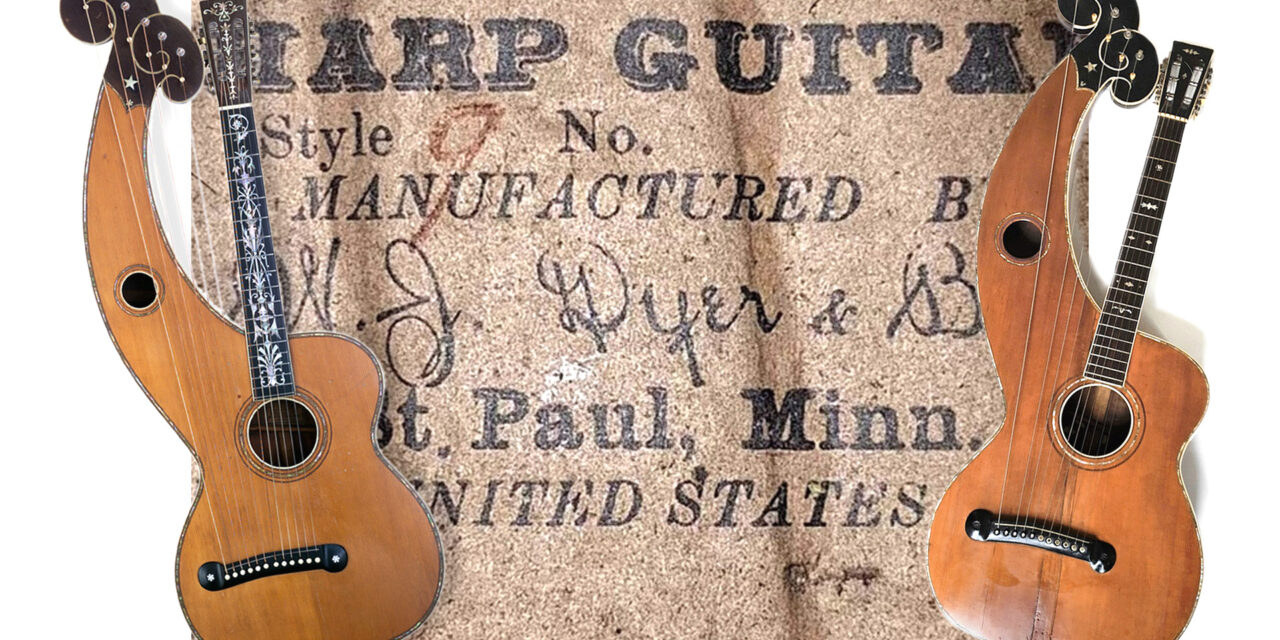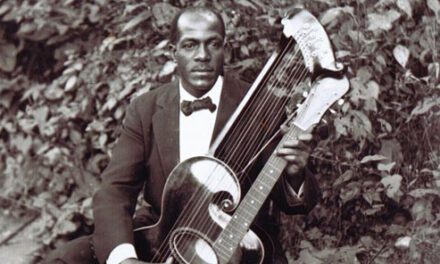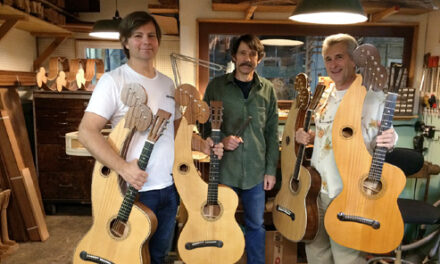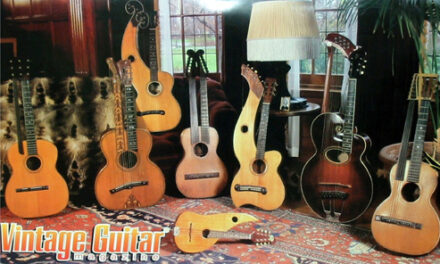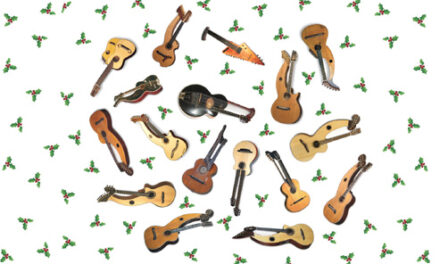I have long counted myself extremely fortunate to be among the rarified owners of that Holy Grail of harp guitars, the W. J. Dyer & Bro. Style 8:
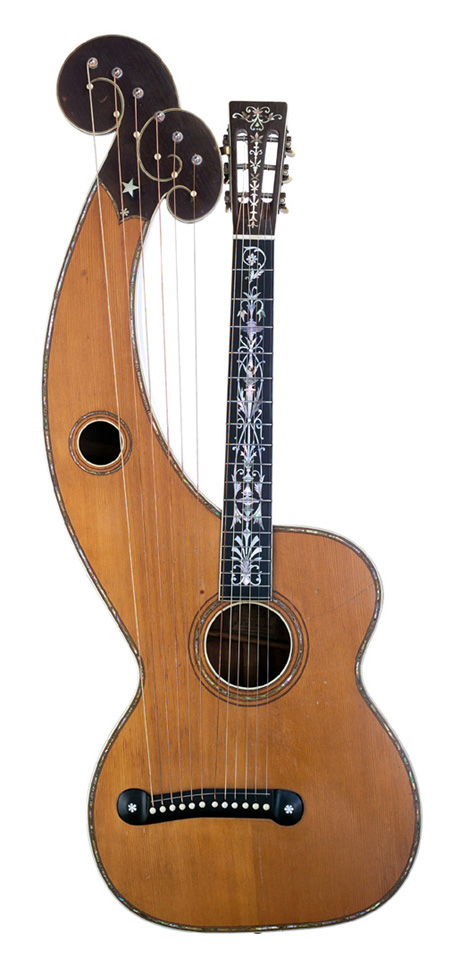
As all aficionados know, this was their top-of-the-line model with the gorgeous “tree-of-life” inlaid pearl fingerboard. At present, there are still just sixteen of these instruments recorded (see my blog here for those details).
Regarding the remaining models, we also know that the Larson brothers built five specific trim levels of their famous Dyer harp guitar – from Style 4 (the plainest) all the way up to the Style 8.
Needless to say, I thus did a mental double-take (and physically, my eyeballs did bulge out) when a friend texted me with this cryptic message:
“Have you ever heard of a Dyer Style 9?”
Surely, they must be mistaken!
Then I got an image of the label:
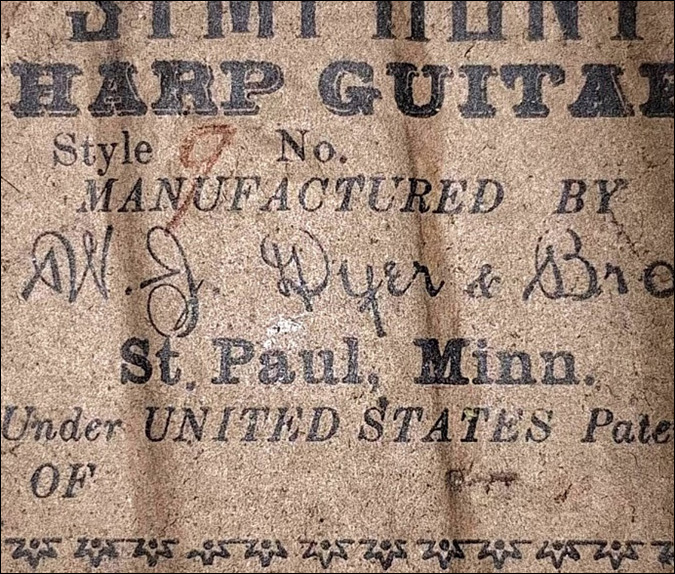
*Gulp*…They weren’t kidding. But how does one go beyond that Style 8 above? Is it like the Spinal Tap amp that “goes to 11”?
Well, yes and no. The style number does indeed go up to 9, as clearly seen on its early Knutsen-signed W. J. Dyer & Bro. label above.
OK, now the reveal:
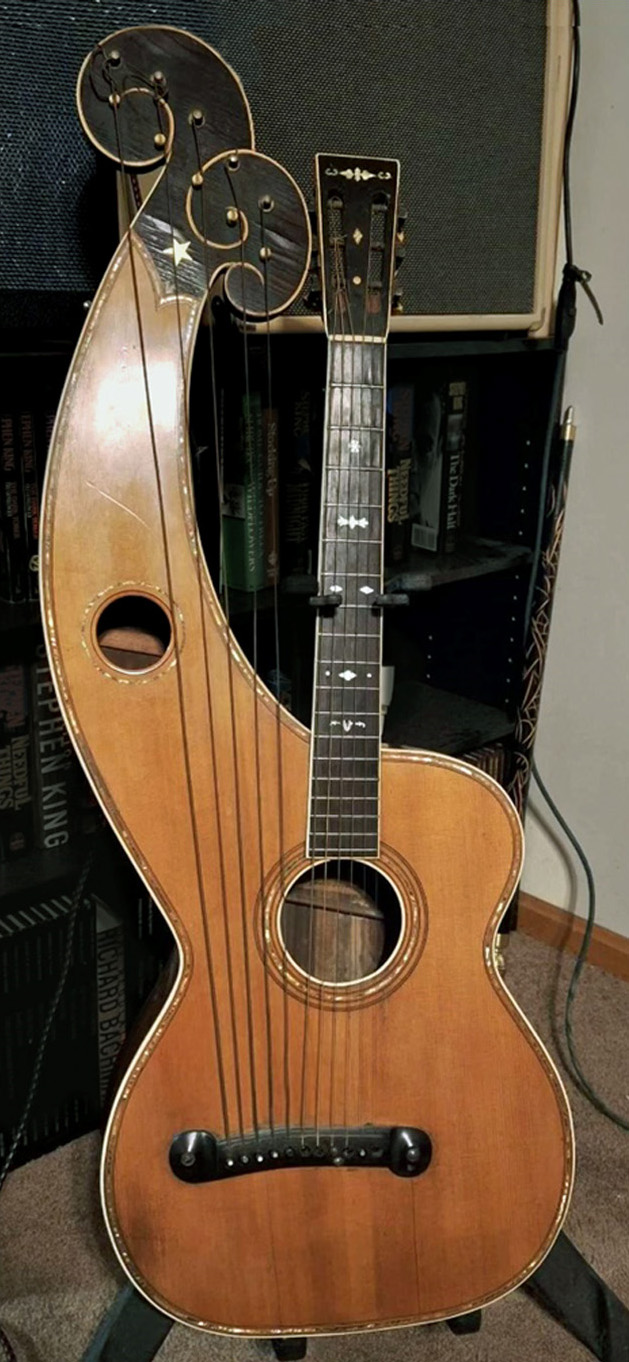
Hmm, OK, I’ll admit it was a bit anticlimactic. I’ll also admit I was relieved that it did not manage to outdo my beloved Style 8. So, what’s going on?
While it’s not fancier than the Style 8, it’s definitely a new configuration. In fact, one that seems to be somewhere between a Dyer Style 7 and Style 8. It’s basically a standard Style 7, but with the 7’s multi-colored wood purfling swapped out for abalone around the top like the Style 8. I suspect it was a custom order through the Dyer company, which the Larsons were easily able to accommodate.
Perhaps a better designation might have been a “7-1/2”? – which was apparently a number neither the Larsons nor the Dyer rep wanted to use. Yet, they did want to give this custom model its own designation, so “9” was the next one in line, I guess!
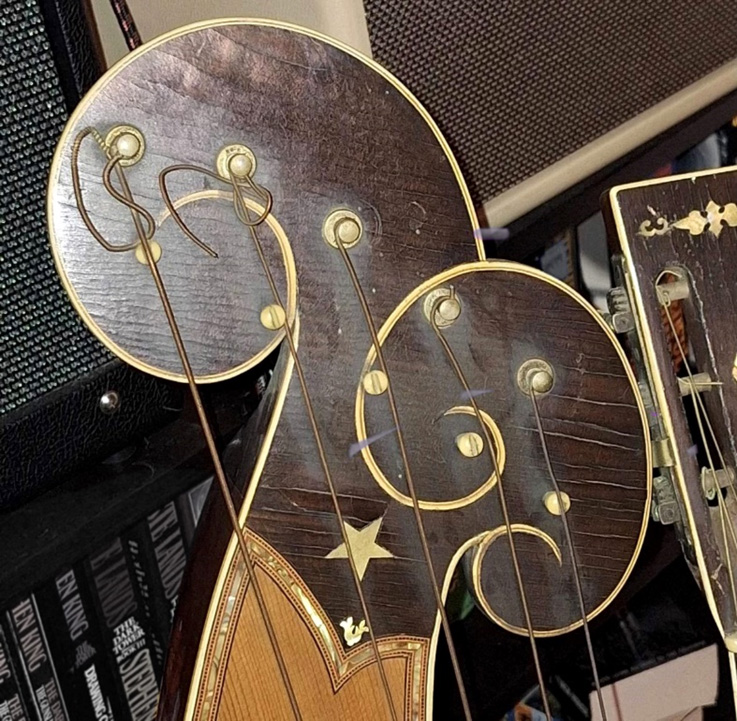
Here’s the bass head. Note that it has just five sub-bass strings and also note the shape of the small inlay under the star. We’ll examine the binding more closely in a minute. Though the serial number cannot be read, we know that this is an early Dyer, due to it having the Knutsen signed label, which I believe stopped somewhere between 1906 and 1908. That particular “squiggly V” inlay in that spot is also an early variation, and five subs is a good clue that it’s earlier than later. Dyer wouldn’t advertise six sub-basses as standard for some years, and for quite a while they had some crossover on this feature, likely due to customer requests. Still, the majority of those built in the first few years had five subs, while nearly all built in their last dozen-plus years seem to have the settled-on six.
The images came from a colleague shared privately with me. He obtained them from someone on Facebook who was looking for info on it. Unfortunately, the owner soon stopped all communication about it and disappeared; perhaps we’ll see it on the market someday.
So, just how unusual is it?
I know of at least one other, shown here alongside:
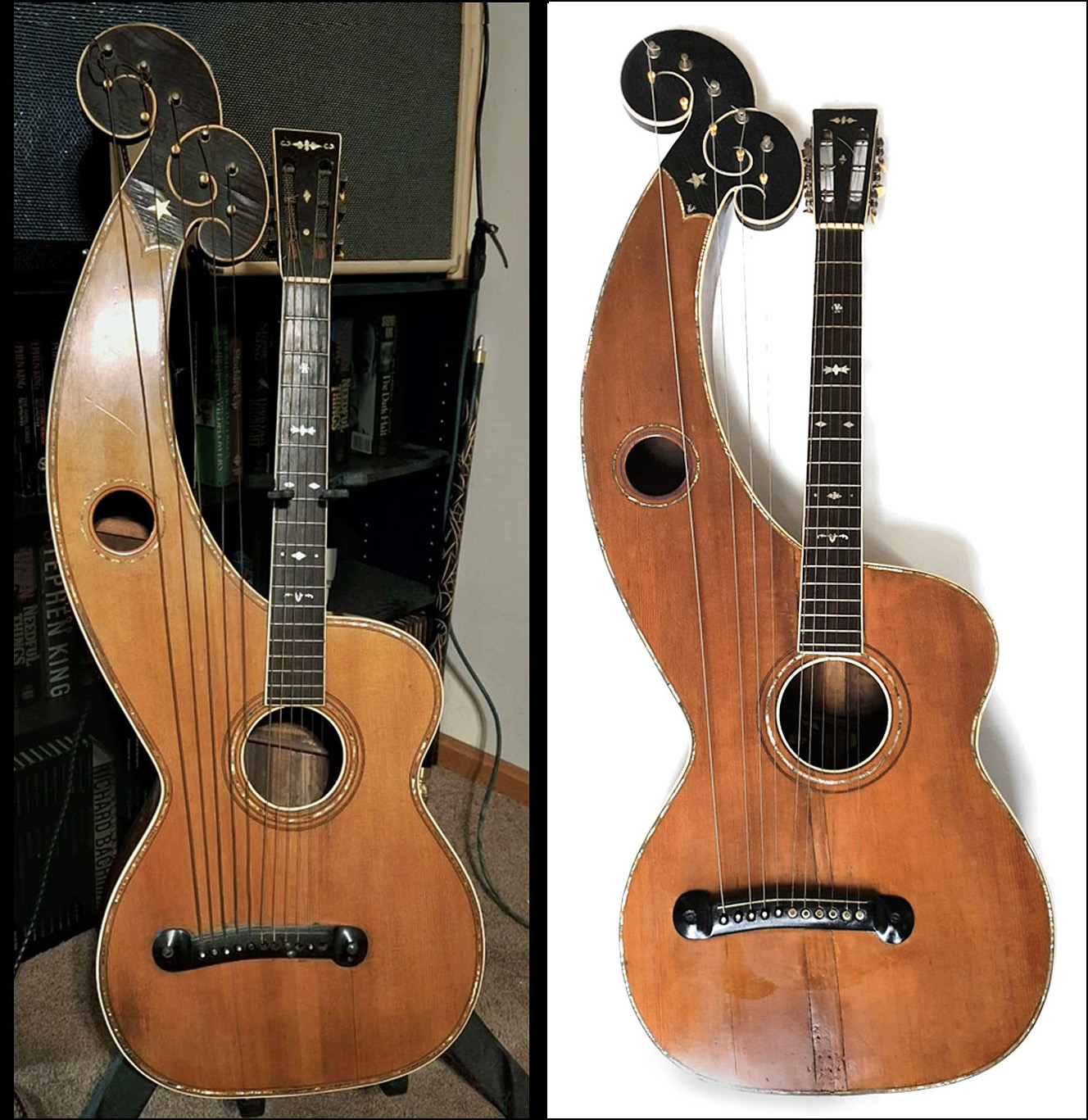
The one on the right has no label, so we can’t know if it was similarly inscribed as a Style 9. This original instrument has since been restored and listed for sale on my Harp Guitar Music web site in April 2024.
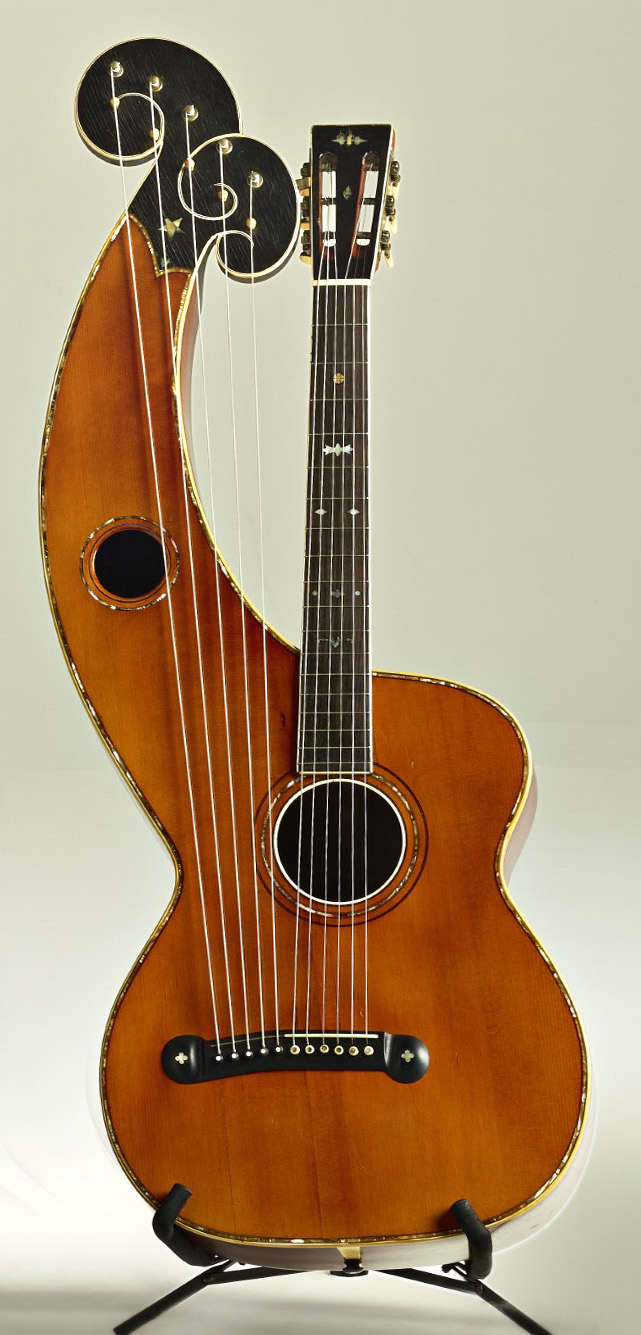
These two seem essentially identical; both are five-bass, early instruments. In fact, their neck inlays are virtually identical, which is unusual in these early instruments:
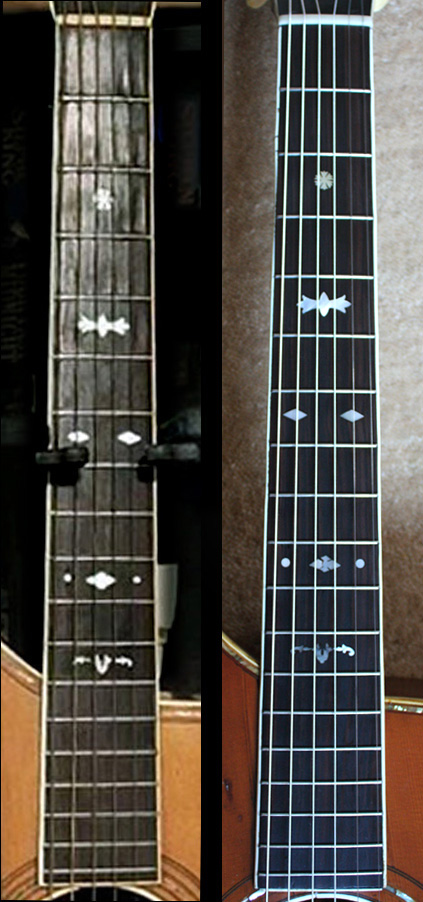
However, I noticed that they have different trim around the abalone:
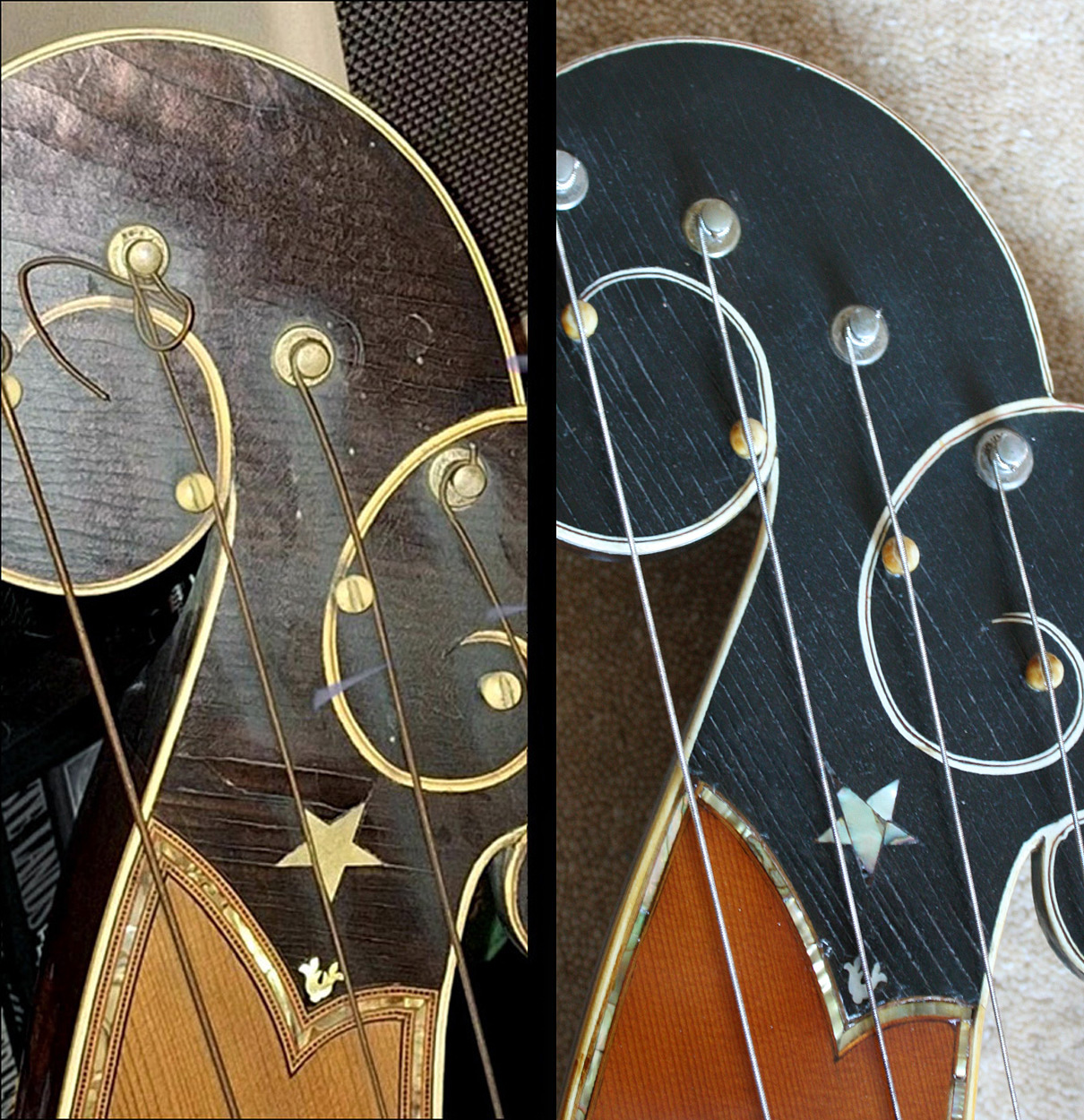
The Style 9 on the left has strips of tiny Larson “micro-ladder” binding, while the one on the right does not. It’s also interesting to compare these to their brothers and sisters, the Style 7’s and 8’s:
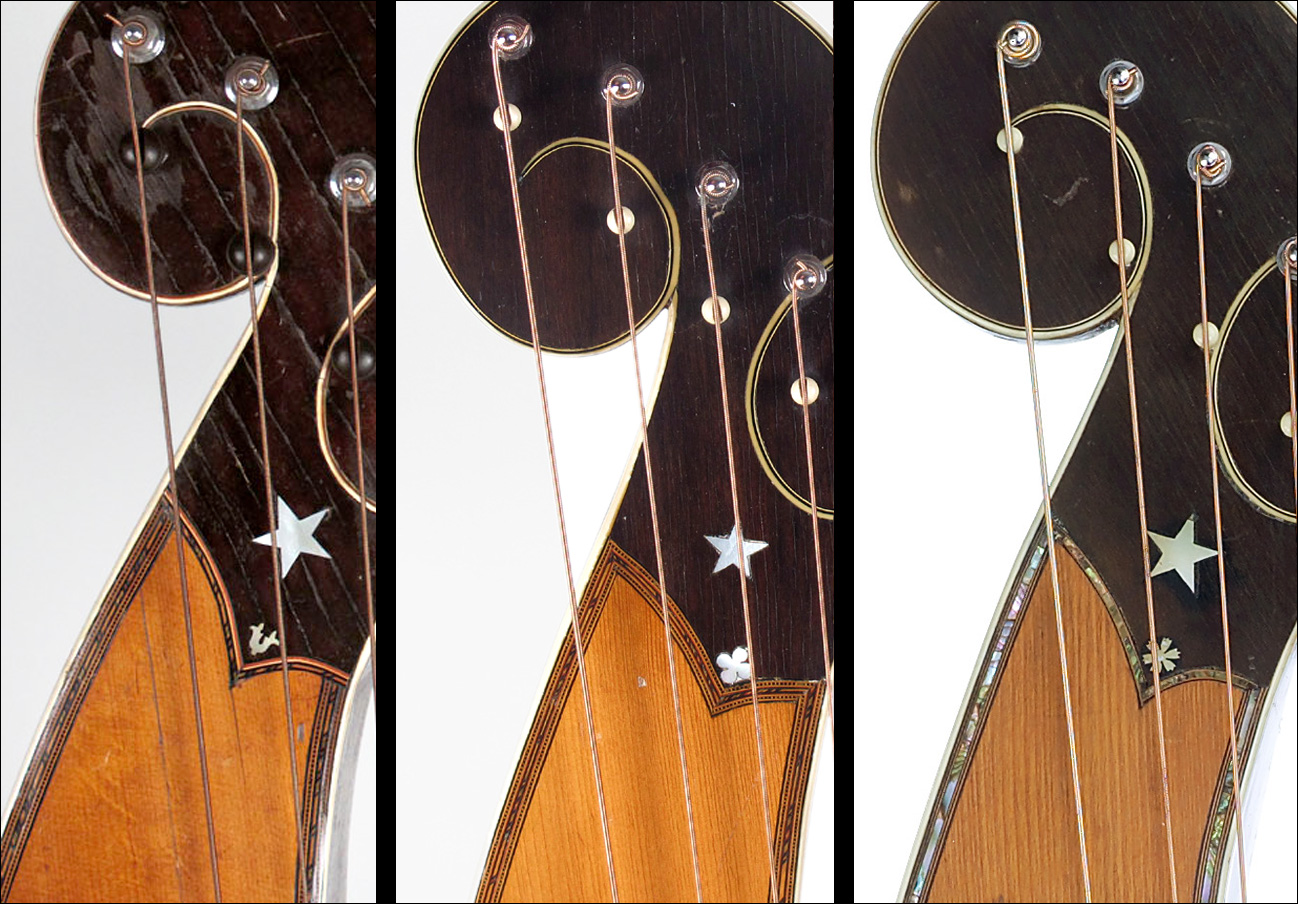
Two early Style 7’s are on the left. Style 7 always had some type of multi-colored purfling (note that the purfling of the likely-earlier one on the left does not go all the way around the arm). Each has that same border of micro-ladder purfling. My c.1910 Style 8 on the right has only a double stripe bordering the shell.
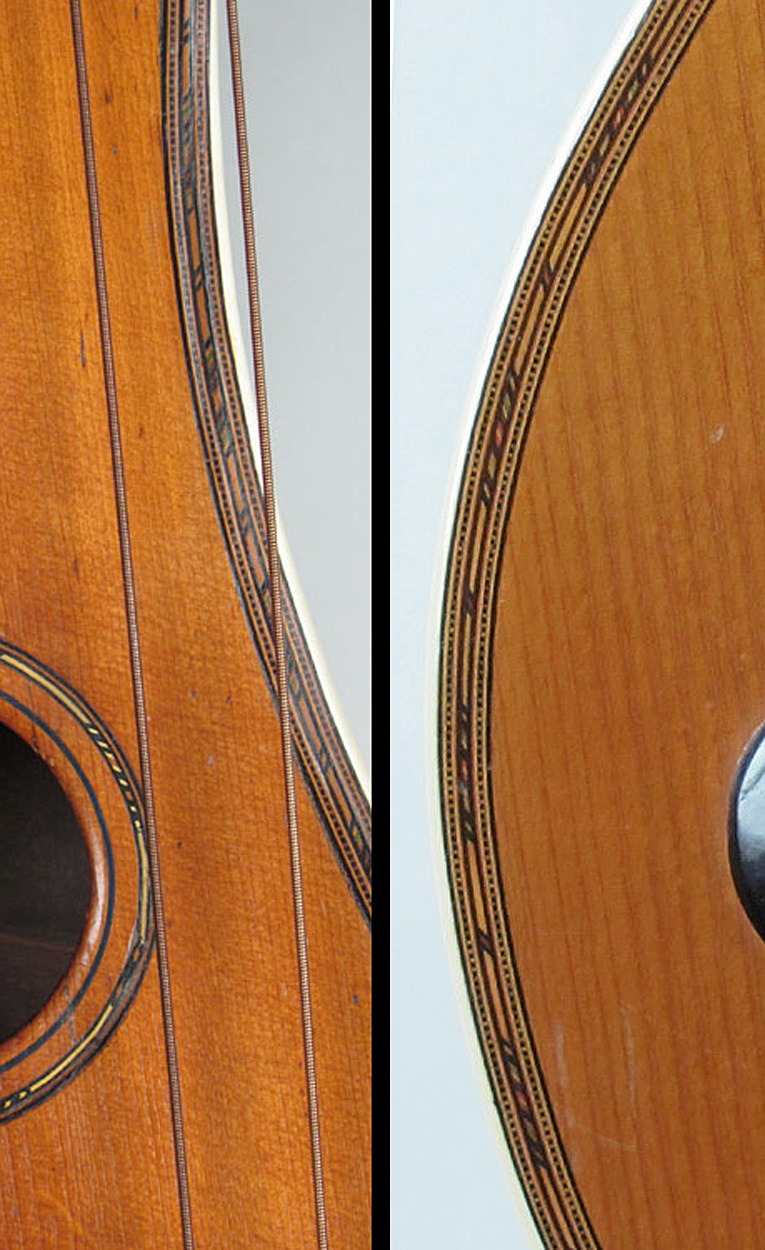
The “micro-ladder” binding that appears on either side of the large multi-colored purfling above is tricky to evaluate, much of it due to its tiny size and lack of high-resolution photographs available. (You’ll need to open up all these examples full size on a large monitor to even see it.). The early examples look more like “dots.” Above are enlargements of the outer two instruments, and we can see that the “dots” are “squares” (created in cutting and glueing, then slicing the purfling pieces). The next two examples below are from slightly to somewhat later Style 7’s and are also in higher resolution. Here, both of the “squares” appear to be “rectangles” – with the overall effect of being the empty spaces within rungs of a light-colored “ladder.” It’s hard to decide if I’m seeing this or only imagining it! But, it does seem that this “stock purfling” either changed over time, or randomly, from what the Larsons could source. And it may be “in the noise” of this analysis.
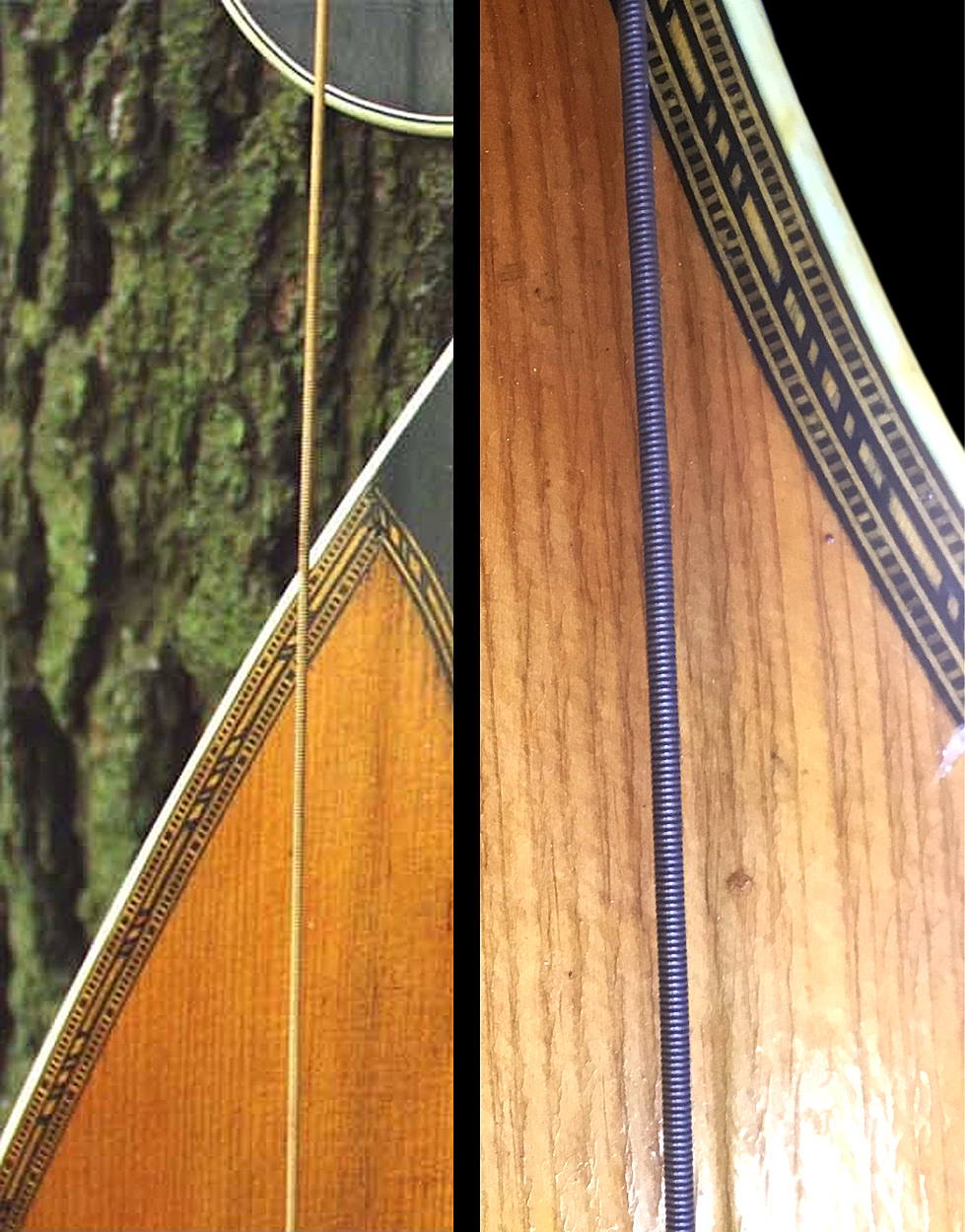
Finally, the early micro-ladder purfling did appear on the very earliest known Style 8 (serial #264), seen below. All other 8’s I’ve been able to examine in my files seem to have only the simple b/w striping (possibly always doubled up).
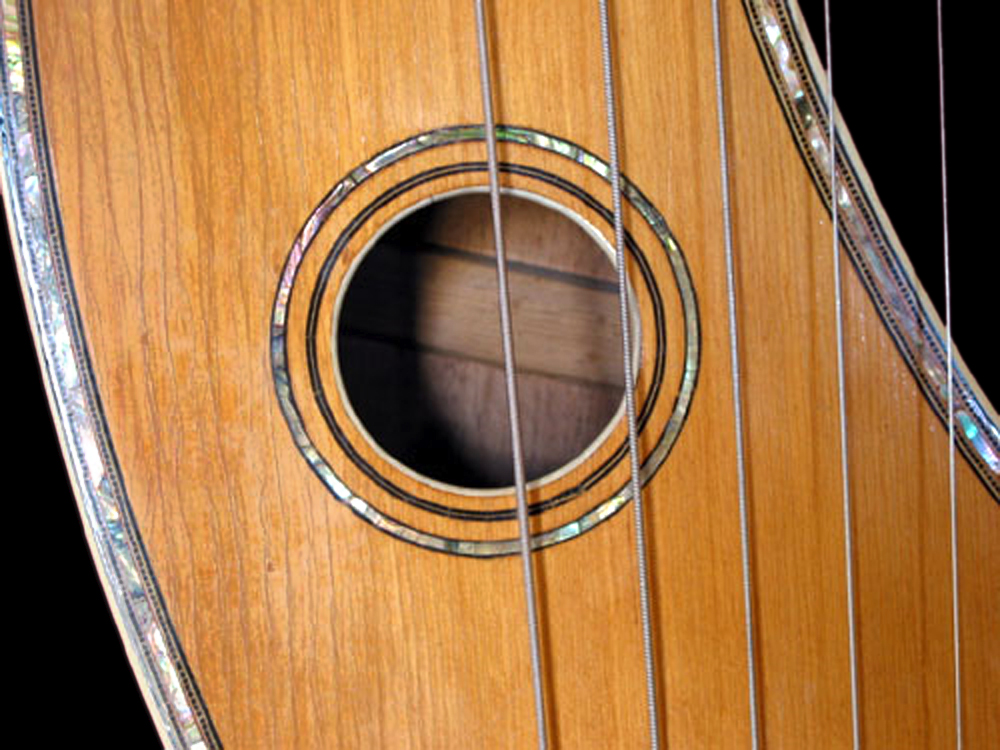
Now I’ll finish up with the variety of fingerboard inlays. It seems that finding the two nearly identical “9’s” above is unusual!
Usually, Style 7s (which the “9’s” are essentially a variant of) have surprisingly random inlay patterns. Clearly, the Larsons had a bin full of ready-cut inlay options that changed over the years. That and they might have run out of one of the other, or just got bored!
Indeed, those hoping to date or otherwise find consistency in their Style 7’s have their work cut out for them! Let’s take a look at just some of the variations in my files…
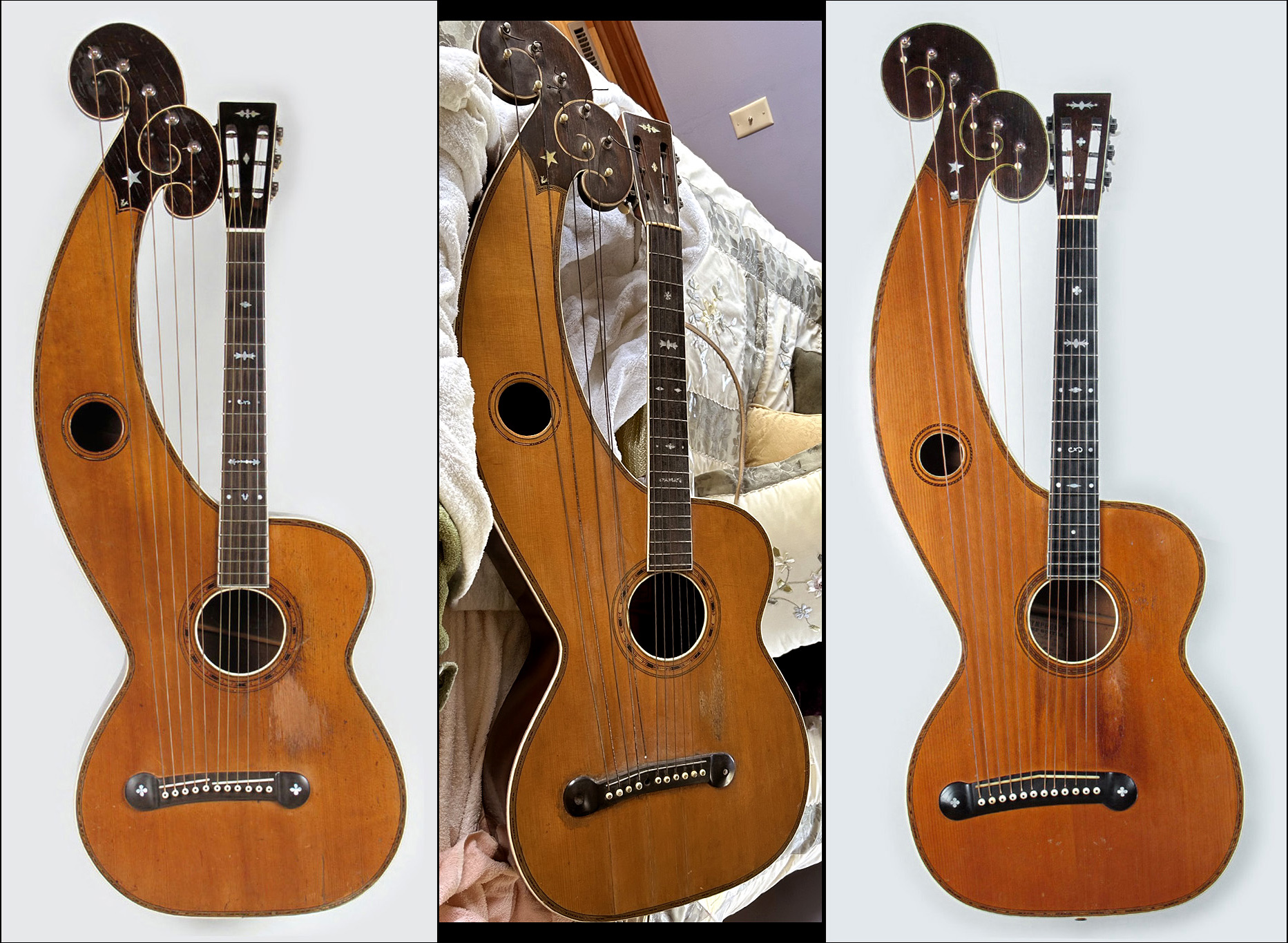
All three of these Style 7’s are early and all have the Knutsen-signed label. I refer to all of them as “circa 1907,” which in this case means they are from anywhere between 1905 and 1908. The one on was once owned by Bob Hartman; its number is unfortunately illegible. However, all of its inlays match that of Style 7 serial #229 (not pictured), which is a lower number than any other instruments in this article. In the middle is serial number 247 (or 242). These first two (along with #229) have the then-standard five sub-bass strings, and a more contrasted wood purfling rosette pattern seen on many of the older instruments. They also have that “squiggly V” inlay under the head’s star (like the Style 9’s). However, the middle #247/2 has different fingerboard inlays. The specimen on the right is #276 – not too far after the 5-bass on the left – but it has six subs, with the more common “4-leaf clover” inlay under the star and elsewhere. Its fretboard inlays (including the headstock) are again different. It’s also a rare thinner-bodied build – roughly 3-1/2” deep. It’s almost as if the Larsons installed an early numbered label on a later instrument. It could also have been an early request for a 6-bass instrument (“and while you’re at it, don’t make it so thick!”).

This early 5-bass Style 7 has an original maple bridge.
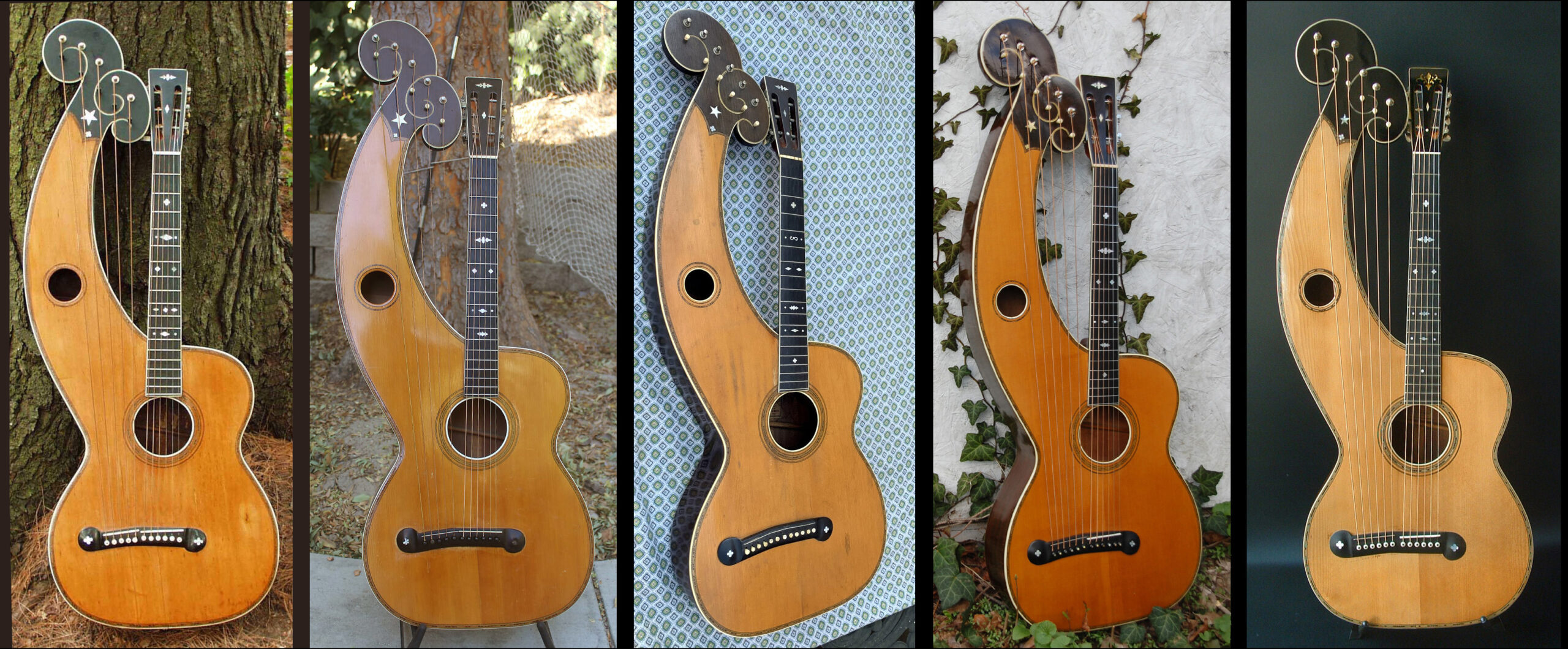
This series of both 5- and 6-bass Style 7s are mostly unlabeled (missing or illegible). From left-to-right: NL (no label), NL, #685 (c.1910), #788 (c.1913), NL
I have them sorted roughly in a timeline, with the 5-bass instruments on the left, then going into the 6-bass models. Interesting that in every Style 7 and 9 in this article, all those with five sub-bass strings do not have fretboard inlays past the 12th – while all those with six subs include a 15th fret marker…regardless of date! All have a marker on the 10th (as opposed to optional 9th) fret, a typical Larson trait. Note the last specimen on the right which has a still fancier headstock inlay at the top.
I don’t have the photo resolution on these to adequately show the purfling around the top and within the rosettes, but these are mostly different as well. Here are the fingerboards:
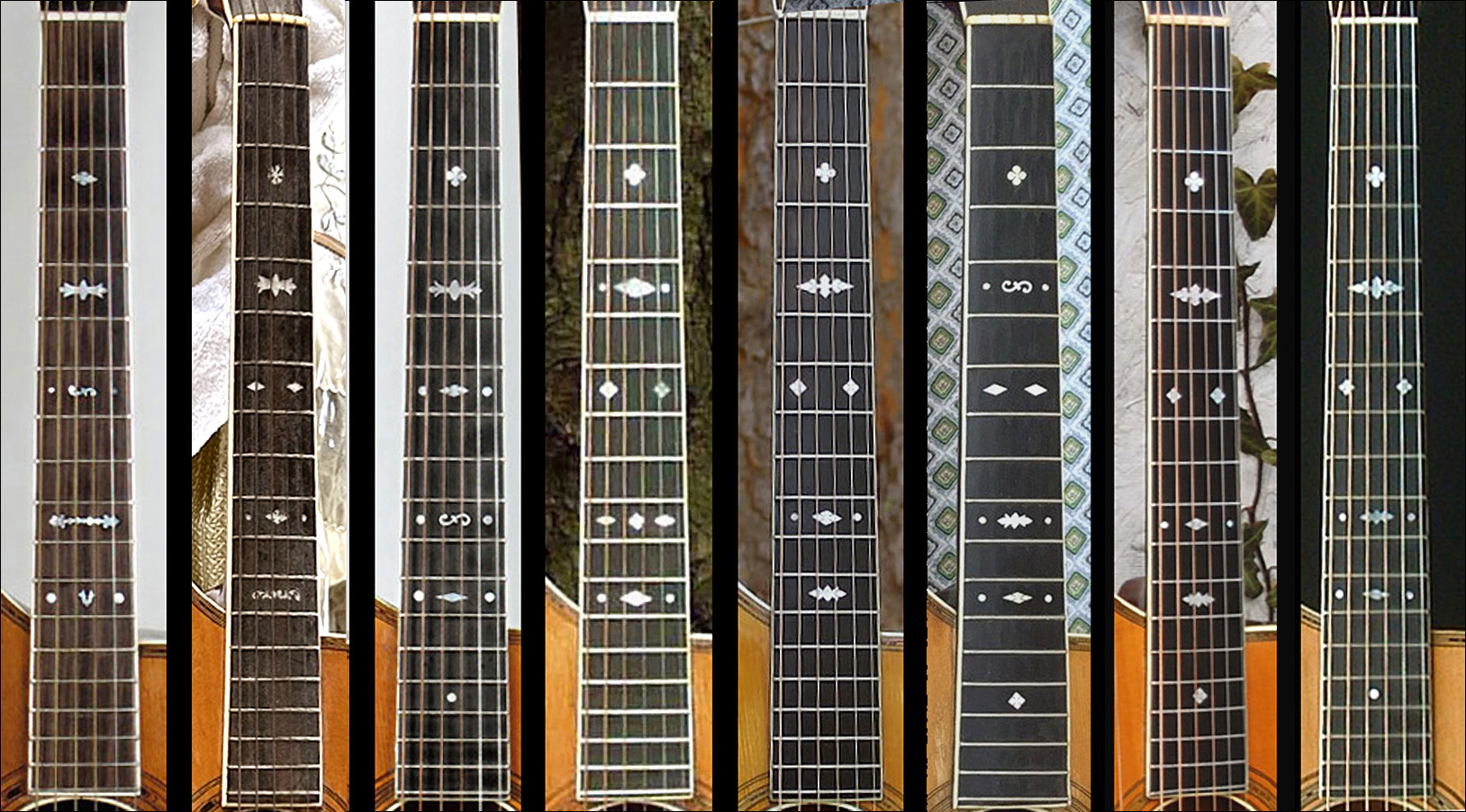
These are those same first three c. 1907 instruments and the subsequent five Style 7’s. The chronology is not necessarily exact, but nevertheless shows how the Larsons went for a consistent “look” for the 7s, even if they didn’t necessarily lock in every inlay shape. No two of these are identical! I’m sure if I had photos of another fifty of these, we’d have to see many duplications; that’s simple statistics. But I bet we’d find a few more fun surprises as well!

